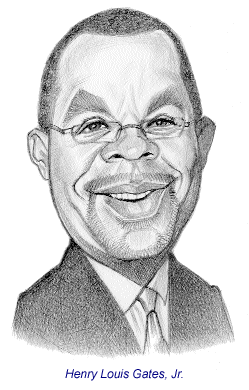| Ivy League Generosity Will Lure Affluent and Brightest Black Students Away From State Universities Harvard and Yale have both announced new financial aid initiatives that will provide substantial aid to families with incomes as high as $200,000. These plans are likely to attract enrollments of high-achieving black students from relatively affluent families who in the past have chosen to enroll at more affordable flagship state universities.
In a further benefit, attractive particularly to upper-income families, the value of a family’s primary residence will not be considered in assessing the family’s assets or wealth. Harvard describes this initiative as a middle-class program but some may see it essentially as aid to affluent or moderately affluent families. Under the new eligibility rules, families with incomes of as much as $180,000 are eligible to receive significant financial aid of $30,000 or more. Even today, without benefit of this new program, Harvard students from affluent families are receiving generous financial aid. According to a recent address by William Fitzsimmons, dean of admissions and financial aid at Harvard, more than 350 undergraduates at Harvard this year whose family income is above $160,000 received financial assistance. Dean Fitzsimmons added that the average “need-based” financial aid award for students from families with incomes between $100,000 and $140,000 is $21,693. An important question is the probable effect of the new initiative on college-bound African Americans. It is certain that the new plan will draw more affluent blacks to Harvard. Consider, as an example, a high-achieving black student from a Detroit suburb whose two-earner family income is $150,000 or more. In the past this student would have shied away from applying to Harvard because of its high cost — now approaching $50,000 a year — and because the unavailability of financial aid for a student from a family with this relatively high level of income. In most cases Harvard would have lost this student to the University of Michigan, where in-state tuition costs are a fraction of Harvard’s comprehensive fees. But now the same student may apply to Harvard confident that, if accepted, he or she will not have to pay any more than it would cost to attend the University of Michigan. Under this dramatic new financial aid initiative Harvard will now draw academically strong, upper-income black students that Harvard heretofore has been losing to such high-quality flagship institutions as the University of Virginia, the University of North Carolina at Chapel Hill, the University of Michigan, and the University of California. Throughout the country, Harvard now is likely to skim off a large number of the most gifted black students. In an effort to persuade the academic community that Harvard’s financial muscle should not be feared, Harvard will make the point that at best it will enroll 200 black freshmen each year. Thus, it will be argued that its new financial aid plan will have a negligible effect on total enrollments of blacks at America’s leading state universities. Currently there are 62 colleges and universities in the United States with endowments of $1 billion or more. Once the Harvard plan becomes the norm for highly endowed institutions, large numbers of highly qualified college-bound blacks will turn their backs on state universities. The only competitive weapon the state universities have is the offering of merit scholarships. But these types of scholarships are limited in dollars and won’t stack up to the huge and almost irresistible financial incentives being offered by America’s wealthiest private universities. There is simply no way that the state universities can compete with the financial aid offerings of these private universities with large endowments.
However, many African Americans at Harvard see the new plan as a positive development. Professor Gates told JBHE that “This is a brilliant plan, one that will make Harvard much more easily affordable for the black middle class. In addition to Harvard's guarantee of a free education to families whose income is below $60,000, this new financial aid package will insure ever more economic and racial diversity among the future leaders of America whom Harvard, and our peer institutions, are pledged to educate.” Largely overlooked is the fact that American universities with the largest endowments continue to do a poor job in enrolling low-income students. JBHE data shows that over the past 23 years, eight of the 10 universities with the largest endowments have shown a decline in the percentage of low-income students in their student bodies. For example, in 1983, 29.3 percent of all students at Columbia University came from low-income families. In 2006, only 15.3 percent of Columbia’s undergraduates were from low-income families. At Northwestern University, the percentage of low-income students dropped from 14.7 percent in 1983 to 8.7 percent in 2006. Over the past five years, many of these universities have virtually eliminated the cost of attending these institutions for students from families earning under $60,000. Yet, over the most recent two-year period, the percentage of low-income students has declined at eight of the 10 universities with the largest endowments. |
|




 In December, Harvard University unveiled, with considerable fanfare, an extensive new financial aid program aimed at attracting students from upper-middle-class families. Under the new plan, students from families with annual incomes up to $180,000 will be asked to pay a maximum of 10 percent of the family income for tuition and other fees at Harvard. For these students, the university will provide scholarship grants to make up the rest of the nearly $50,000 annual cost of attending Harvard.
In December, Harvard University unveiled, with considerable fanfare, an extensive new financial aid program aimed at attracting students from upper-middle-class families. Under the new plan, students from families with annual incomes up to $180,000 will be asked to pay a maximum of 10 percent of the family income for tuition and other fees at Harvard. For these students, the university will provide scholarship grants to make up the rest of the nearly $50,000 annual cost of attending Harvard.  It should be noted that Harvard’s plan will have the effect of adding further influence to an already relatively affluent black student body. Once upon a time, back in the 1960s, Harvard aimed to recruit high-potential black students from the so-called urban ghettos. In recent years it appears that the vast majority of black students at Harvard came from upper-middle-class to affluent families. Professor Henry Louis Gates Jr., director of the W.E.B. Du Bois Institute for African and African-American Research at Harvard University, has stated his belief that very few of Harvard’s black students are the descendants of American slaves and that most black students at Harvard were from middle-class or affluent black families. A 2006 study by researchers at Princeton and the University of Pennsylvania found that more than one quarter of the native-born black students at 28 selective colleges and universities came from families with annual incomes over $100,000. From JBHE’s perspective, it appears that the new Harvard financial aid plan is likely to add more relatively affluent black students to a Harvard group that is already relatively affluent.
It should be noted that Harvard’s plan will have the effect of adding further influence to an already relatively affluent black student body. Once upon a time, back in the 1960s, Harvard aimed to recruit high-potential black students from the so-called urban ghettos. In recent years it appears that the vast majority of black students at Harvard came from upper-middle-class to affluent families. Professor Henry Louis Gates Jr., director of the W.E.B. Du Bois Institute for African and African-American Research at Harvard University, has stated his belief that very few of Harvard’s black students are the descendants of American slaves and that most black students at Harvard were from middle-class or affluent black families. A 2006 study by researchers at Princeton and the University of Pennsylvania found that more than one quarter of the native-born black students at 28 selective colleges and universities came from families with annual incomes over $100,000. From JBHE’s perspective, it appears that the new Harvard financial aid plan is likely to add more relatively affluent black students to a Harvard group that is already relatively affluent.